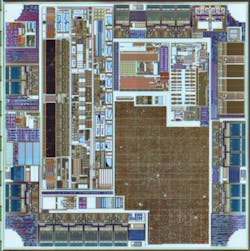DARPA eyes trusted computing, secure chip use, and semiconductor manufacturing
ARLINGTON, Va. — U.S. military researchers briefed industry in December on a new initiative to help develop secure integrated circuit technology for trusted computing applications, ranging from manufacturing to systems integration.
Officials of the U.S. Defense Advanced Research Projects Agency (DARPA) in Arlington, Va., briefed industry on the upcoming Electronics Resurgence Initiative: Defense Applications (ERI:DA) project.
ERI:DA is one of several potential broad agency announcements under the recently announced second phase of the DARPA Electronics Resurgence Initiative.
Researchers are sending out feelers to industry for new technologies in secure integrated circuits and trusted computing.
The ERI-DA project seeks to develop revolutionary national defense capabilities that capitalize on technologies developed in existing ERI thrusts — namely, the need to support domestic secure chip manufacturing; invest in chip security; and demonstrate new ERI technologies for defense applications.
The ERI Phase II will build on existing ERI programs to help support domestic semiconductor manufacturing processes that can help defense electronics systems integrators implement specialized circuits.
Further, this effort aims to ensure that those electronic circuits can be trusted through the supply chain and are built with security in mind, making certain that technological advances ultimately are applied to national security.
DARPA researchers are looking for ways to apply advanced electronics to machine autonomy and artificial intelligence; large-scale emulation; cyber security; space applications; cognitive electronic warfare; and intelligence, surveillance and reconnaissance (ISR).
Eligible ERI programs could include Common Heterogeneous Integration and Intellectual Property Reuse Strategies (CHIPS); Three-Dimensional Monolithic System-on-a-Chip (3DSoC); Foundations Required for Novel Compute (FRANC); Software Defined Hardware (SDH); Domain-specific System on Chip (DSSoC); Intelligent Design of Electronic Assets (IDEA); Posh Open Source Hardware (POSH); and the Joint University Microelectronics Program (JUMP).
DARPA announced the Electronic Resurgence Initiative’s first phase in June 2017, which has spent upwards of $1.5 billion to advance microelectronics performance beyond the limits of traditional transistor scaling, and demonstrate the influence of this research on national defense. DARPA announced competitive awards for the first group of six new ERI programs in July 2018.
Email questions or concerns to [email protected]
More information is online at https://www.fbo.gov/spg/ODA/DARPA/CMO/DARPA-SN-19-15/listing.html.

